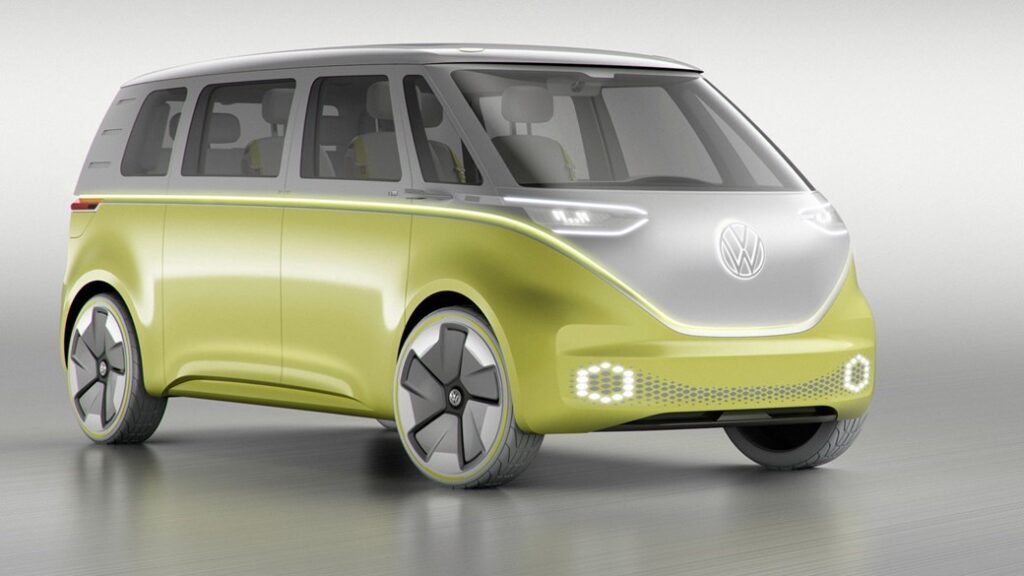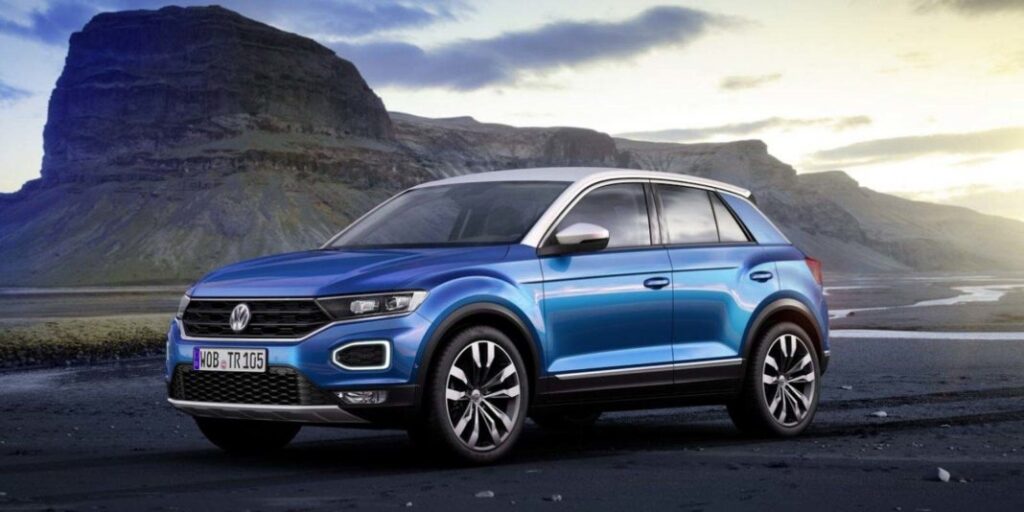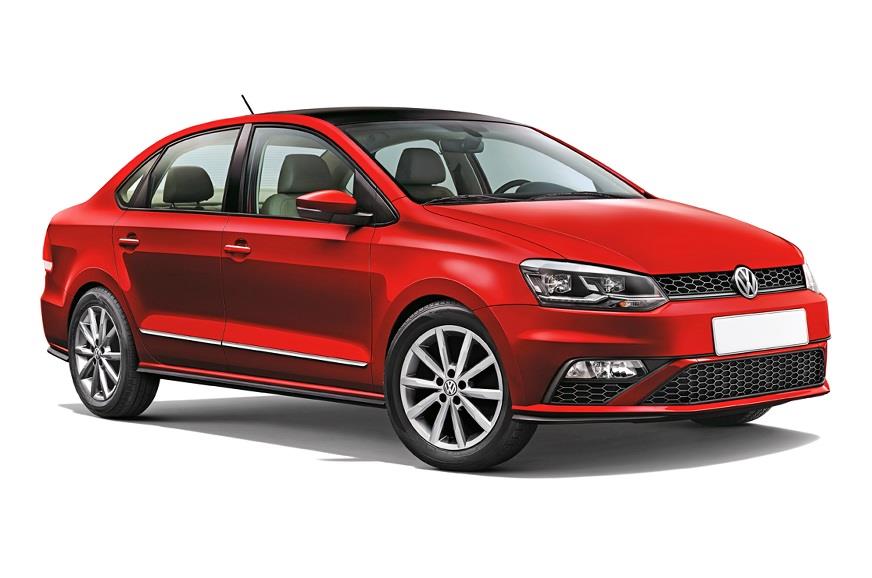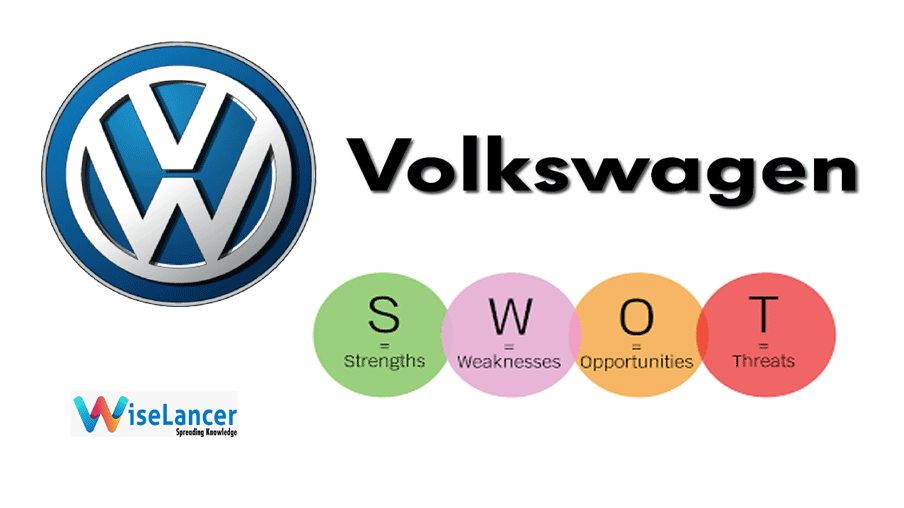Looking for a Full and Up-To-Date Volkswagen SWOT Analysis?
You’ve come to the correct place. This article discusses the Volkswagen SWOT Analysis:
Strengths: Volkswagen has been a leader in the automobile industry due to internal reasons.
Weaknesses: Weaknesses are internal issues that cause a company’s performance to suffer.
Opportunities: External variables that the firm can use to expand are referred to as opportunities.
Threats: External elements that might obstruct Volkswagen’s growth are referred to as threats.

Let’s start with Volkswagen’s strengths.
What are Volkswagen’s Main Strengths? | Volkswagen SWOT Analysis
Volkswagen is well-known for its diverse brand portfolio, production capabilities, and sales numbers. It is Europe’s largest automobile manufacturer and the world’s 2nd largest. Volkswagen also makes significant investments in research and development.
Now, Let’s Peek at Some of Volkswagen’s Strengths:
Volkswagen appeals to a wide range of consumers with its diverse brand portfolio. Audi, Skoda, Bentley, Bugatti, Lamborghini, Ducati, and Porsche are among the most well-known brands. These are owned by the Volkswagen Group.
The capacity of manufacturing The Volkswagen Group has a total of 118 production units across the world. The manufacturer is expected to build 8.9 million vehicles in 2020. It also has a workforce of 662,600 workers. Volkswagen, as a result, defines what it takes to be world-class.
Research and development: Volkswagen overtook Toyota in R&D investment in 2020. Volkswagen spent $16.51 billion on research and development last year. Toyota spent $10.14 billion on research and development during the same time period. As a result, Volkswagen invested 62.85% more than Toyota.
Car. Software Organization is a Volkswagen Group software business that is working on vehicle operating systems. The software firm recently announced a collaboration with Microsoft to create a cloud-based automated driving platform (ADP).
Volkswagen aspires to create a technological stack that will power the next development of intelligent vehicles.
Volkswagen has set a target of 2026 for the introduction of the Trinity, an electric car. The company hopes to set the standard for recharging distance and speed traveled by electric vehicles with the sedan. The car is coming with or is compatible with cutting-edge automated steering technologies.
While this may seem that Volkswagen’s biggest strength is its R&D investment, its greatest strength is its manufacturing capacity and sales statistics, according to this research. Without income, the firm will be unable to fund its massive research and development expenditure.
Read Also: SWOT Analysis of Yves Saint Laurent, Competitors & USP

What are a Few of Volkswagen’s Weaknesses? | Volkswagen SWOT Analysis
Volkswagen’s main competition has always been Toyota. In terms of production and sales, the two firms are identical. On the other hand, Volkswagen now has new opponents in the form of Tesla, thanks to its drive into electric vehicles and software. Volkswagen would have to address its shortcomings in order to keep ahead of its new and old competition.
Here are a few of Volkswagen’s flaws:
Sales: In the year 2020, Toyota overcame Volkswagen for the first position in overall sales. Volkswagen announced revenues of 264.97 billion dollars. During the same time period, Toyota raised $273.2 billion.
Volkswagen’s newest electric car offering, the Volkswagen ID.4, is falling behind in the electric car market. The ID.4 is currently ranked eighth in Edmund’s electric car ranking, having an EPA range of 287 miles. In a recent experiment, the ID.4 beat the EPA’s predicted range of 250 miles by 14%, yet it still lags behind competitors like Tesla, Hyundai, and Ford.
Volkswagen aims to eliminate 4,000 employees at its German factories by implementing early or partial retirement schemes. The cost of the employment cutbacks will be around $598 million. In addition, all outsourcing has been temporarily halted, except for sectors linked to electric cars and software development.
Volkswagen has released an official press statement announcing the renaming of its US division to “Volkswagen.” The firm then clarified that the ad was an April Fool’s prank. On the other hand, the SEC deemed the move reckless and said it would look into it.
Volkswagen’s management structure:
Volkswagen’s management structure: Unions hold half of the votes on the company’s 20-member supervisory board. CEO Herbert Diess is facing pushback from union leaders in his efforts to modernize Volkswagen.
Due to the epidemic, Volkswagen’s yearly automobile sales fell to the second-lowest level in the past decade. This may appear to be Volkswagen’s worst flaw. This, meanwhile, is only a transitory issue. The main issue for the firm is to transition away from internal combustion engines, which it has relied on for decades, and toward electric vehicles.
Read Also: How to Efficiently Conduct a PESTLE & SWOT Analysis

What are some of Volkswagen’s Opportunities? | Volkswagen SWOT Analysis
Until now, Volkswagen’s competitive edge has been its capacity to manufacture and sell more than its rivals. Volkswagen manufactured about 100 million automobiles between 2011 to 2020, an average of 10 million each year. Volkswagen has changed its attention to electric and digital car technologies, pledging $86 billion in investment.
Here are a few particular opportunities in developing automotive technology that Volkswagen may make use of:
Volkswagen has committed $45 billion in electric vehicles, possibly in an attempt to catch up with Tesla. The firm has announced intentions to build batteries for its electric vehicles at six plants. Volkswagen has stated that it intends to develop its operating system to become Europe’s second-largest software firm.
Argo AI, a firm that develops automated driving technology, received a $2.6 billion investment from Volkswagen. Argo is putting its self-driving cars through their paces on public highways in locations like Miami, Pittsburgh, Detroit, and Palo Alto. Thanks to the Argo AI, Volkswagen wants to get its self-driving vehicles on the streets by the end of the decade.
Bidirectional charging:
Volkswagen discussed its bidirectional charging technology during its Power Day presentation. With this method, you may charge or discharge automobile batteries in a wall box. This permits you to use your car’s unused load to power your house. This technology allows automobiles to reconnect to the network, forming a network-to-vehicle interface. The widespread adoption of this technology in cars might be a game-changer in terms of renewable energy.
Flying cars: In the quest for vertical mobility as the next step beyond autonomous driving, Volkswagen is looking into the possibility of entering the race to build flying cars. With Sky Drive Inc. of Japan having already shown its flying car, Volkswagen must pursue its own goal of being relevant in an ever-changing automotive industry.
Battery supply for automobiles: On Volkswagen’s Power Day, CEO Herbert Diess revealed intentions to open six Giga plants to achieve the 240 Giga Watt-hour target. In case, Volkswagen accomplishes this target, Europe’s share of the global battery supply for electric vehicles would grow to 30%.
According to the aforementioned concepts, Volkswagen’s largest possibilities are to dominate the global supply of two-way compatible electric batteries and to be the dominant software supplier for smart vehicles. The business is already taking steps in that way. However, only time would tell if they are successful.
Read Also: A Complete Case Study of L’Oreal Marketing
What are Volkswagen’s Most Significant Threats? | Volkswagen SWOT Analysis
The automobile industry’s next horizons include electric vehicles and self-driving autos. Nevertheless, suppose Volkswagen wants to acquire the benefit of being a market leader in these areas. In that case, it will have to compete against Toyota, Ford, GM, Honda, and a new opponent, Tesla. The economic slump brought on by COVID-19 only added to the difficulty of the struggle.
COVID-19 pandemic: As a consequence of the worldwide health catastrophe, Volkswagen recorded a 15.2 percent decrease in unit sales in comparison to the previous year. The lower number of units sold resulted in an 11.8 percent decline in sales income year over year.
The Dieselgate Scandal’s Aftermath: Volkswagen was found guilty in 2015 of falsifying emissions testing with on-board computer software. Since then, the carmaker has spent approximately R$46.5 billion on damages and penalties. The Australian Federal Court recently ruled that a fine of $75 million was insufficient and increased it to $125 million.
Tesla is presently valued at $677.02 per share on the stock exchange. When compared to Volkswagen’s share price of $35.08, it’s clear that Tesla has outperformed Volkswagen. Worse, ARK predicts that by 2024, Tesla’s stock would be valued at $7,000 per share.
Providing semiconductor:
Electronic chips play a big role in modern automobiles. A scarcity of semiconductors is also affecting chip manufacturers. A bottleneck formed due to scarcity. Even though the shortfall is due to the epidemic and it is a temporary issue, the bottleneck might continue to stifle output until a permanent solution is discovered.
Regulations: European Union legislators have set a €95 fee per gram of excess CO2 released. Volkswagen was fined $121 million as a result of this. For Volkswagen as well as other automakers, compliance with emissions and other rules is still a difficulty.
Among these dangers, the most serious is Volkswagen’s loss of a bid to raise cash from Tesla in order to develop autonomous vehicles and electric vehicle technologies. With the rate at which Tesla is raising funds, it will be able to probe Volkswagen. As a result, Volkswagen must actively match Tesla’s R&D in order to be relevant in a decade of growing environmental rules and sustainable energy.
Conclusion of the Volkswagen SWOT Analysis
According to the research, Volkswagen is making the correct decision by transitioning from internal combustion engines and human drivers to electric vehicles including self-driving cars.
However, while preserving its leadership in the conventional automobile manufacturing industry, the firm must exhibit the required leadership and management to accomplish this shift.
Volkswagen’s unexpected prominence among automakers might continue if the business succeeds to make the move. Otherwise, as we saw in our assessment of the Volkswagen PESTLE, the company’s heritage would disappear from the pages of automotive history.
Do you think this Volkswagen SWOT Analysis was helpful? Moreover, check out our site for more SWOT analysis examples. If you want to perform your SWOT analysis, our primer on what is SWOT analysis and our SWOT analysis templates will be incredibly useful.
Read Also: PESTLE Analysis of Nintendo – 2021 | Nintendo PESTLE
Need Help or Advice in Content Management or In Marketing Strategy:
Do you want more advice? Do you have good practices to share? Express yourself in the comments.
Get in touch through Contact our team or my Freelancer.com profile. I always prefer to work through Freelancer.com for smooth functioning. Here you pay safely and securely.
Read More
What is SWOT Analysis | SWOT Analysis
SWOT Analysis of KFC | KFC SWOT Analysis
15 Most Gorgeous Indian Women in the World – 2021

Comments are closed.